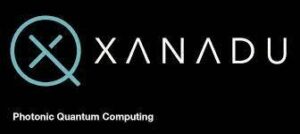
### Twisting Science: How a New Vortex Electric Field Could Transform Electronics
Recently, scientists have made a groundbreaking discovery that could change the way electronic devices are conceived and produced. Researchers have identified a novel form of vortex electric field, achievable through the simple twisting of specific two-dimensional (2D) material layers. This revelation, obtained using an innovative ice-assisted transfer technique, holds the promise of making advanced electronic components more accessible, efficient, and cost-effective.
This pioneering research, spearheaded by Professor Ly Thuc Hue at City University of Hong Kong (CityUHK), introduces a new method for generating vortex electric fields with fewer complications and lowered expenses. The outcome? A potential advancement in technologies spanning from computer memory to quantum computing systems.
—
### Breaking Down the Discovery
#### The Power of the Twist
For many years, generating vortex electric fields—circular or spiral arrangements of electric fields—necessitated costly and complex thin film deposition techniques. Nevertheless, Professor Ly’s team has demonstrated that a straightforward mechanical twist can activate these fields in bilayer 2D materials, representing a far less resource-demanding method that preserves strong functionality.
“Historically, producing a vortex electric field required sophisticated thin film deposition techniques and intricate methods. Our studies have shown that merely twisting bilayer 2D materials can easily generate this vortex electric field,” comments Professor Ly. This methodology has the potential to broaden access to cutting-edge electronic capabilities.
#### Expanding the Possibilities
Conventionally, research on bilayer 2D materials focused on minimal twist angles under 3 degrees. However, this updated research accomplished twist angles ranging from 0 to 60 degrees, greatly widening the experimental latitude for crafting electronic devices. Through their ice-assisted transfer technique, the team was able to manipulate the layers with unprecedented precision, guaranteeing clean interfaces between them. This technique provides better regulation of the electrical characteristics resulting from the twist, paving the way for customized applications.
One of the most intriguing outcomes of the experiment was the formation of a quasicrystal structure—a distinct configuration recognized for its low thermal and electrical conductivity. By adjusting the twist angle between the layers, the researchers could finely modulate the vortex electric field, which could be tailored for various advanced technologies.
—
### How It Works: The Ice-Assisted Transfer Technique
The research team attained this breakthrough by employing an ice-assisted transfer technique—an innovative approach that distinguishes this study. This method utilizes ice as a medium to forge ultra-clean interfaces between bilayers, preserving the integrity of the materials while allowing for precise modifications to the twist angles.
By tackling essential challenges related to stacking 2D materials, such as contamination and misalignment, the ice-assisted method marks a major step forward in nanotechnology. This newfound ability to manipulate layers with such precision has extensive implications for both scientific research and practical implementations in electronics.
—
### Potential Applications
The ramifications of this discovery are extensive, especially for devices needing exact control over electric fields and characteristics, such as quantum computers, memory storage units, and energy-efficient processors. The flexibility of the vortex electric field through fine-tuning of the twist angles makes it a versatile instrument for crafting next-generation electronic components.
Moreover, the capability to create quasicrystal structures opens up new avenues for applications requiring low thermal and electrical conductivity. For example, these traits are advantageous for thermal insulation, high-strength surface coatings, and advanced photonic devices.
Professor Ly states, “This study has the potential to spark a new field focused on twisting vortex fields in nanotechnology and quantum technology,” underscoring the extensive impact this breakthrough could yield.
—
### The Road Ahead: Expanding the Frontier
The researchers are not content with just bilayer materials. With their ice-assisted transfer technique now patented, they are venturing into multi-layer stacking and exploring other types of materials that might produce similar vortex electric field effects. Cooperative initiatives, such as with Professors Zhao Jiong and Yang Ming from Hong Kong Polytechnic University’s Department of Applied Physics, are ongoing to refine and broaden the findings.
Utilizing next-generation tools like four-dimensional transmission electron microscopy (4D-TEM), the team aims to deepen their comprehension of the mechanisms behind these unique electric fields. Their continuing work could usher in entirely new branches of nanotechnology and quantum device engineering.
—
### A Revolution in the Making
This breakthrough showcases the ingenuity in overcoming entrenched scientific barriers. By moving away from costly and resource-intensive methods, researchers have opened a new dimension in material science that is both elegant and impactful.
The capability to generate vortex electric fields via a simple twist in bilayer materials establishes the groundwork for a new era in electronics—one that emphasizes precision, efficiency, and accessibility.
—
### Glossary
– **Vortex Electric Field**: A spiral-shaped or circular electric field that can arise from twisting layers of materials. These fields have potential applications in next-generation electronic and quantum devices.
– **Quasicrystal**: A unique material